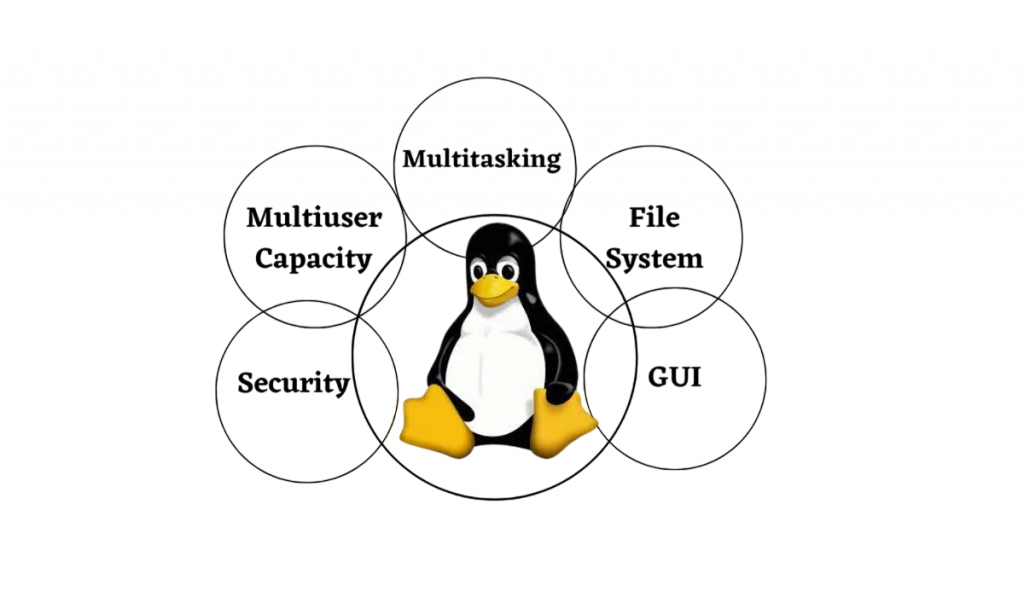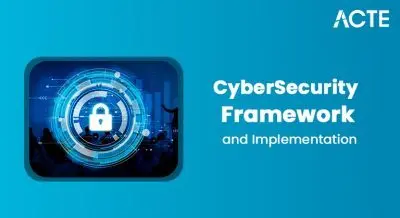
- Introduction to Linux Operating System
- Open Source Nature
- Multi-user Capability
- Multitasking Support
- Security Features
- Portability
- File System Structure
- Conclusion
Introduction to Linux Operating System
Linux is a powerful, Unix-like operating system that has become one of the most influential platforms in the world of computing. Initially developed by Linus Torvalds in 1991 as a personal project, Linux has grown into a massive collaborative effort with contributions from thousands of developers globally. Unlike proprietary systems such as Windows or macOS, Linux follows an open-source model and offers extensive flexibility, customizability, and scalability. It forms the foundation for many technologies from smartphones and smart TVs to servers, supercomputers, and embedded systems. The core of Linux is its kernel, responsible for managing hardware resources and system processes. Surrounding this kernel are various modules, utilities, and tools that together create a fully functional operating system. Let’s explore the major features that define the Linux OS and understand why it is a preferred choice for developers, sysadmins, businesses, Web Designing & Development Training and tech enthusiasts alike. Linux is a robust, open-source operating system that is frequently used in desktop computers, servers, and embedded devices. It is based on the Unix architecture and was developed by Linus Torvalds in 1991. Linux, which supports a large variety of hardware and software, is well-known for its dependability, security, and adaptability. Because it is open-source, users are free to alter and share the program. Linux is available in a number of distributions, such as Fedora, Ubuntu, and Debian, each of which is designed to meet certain requirements. Both novice and expert users can utilize it because it employs both graphical user interfaces and a command-line interface. Linux is well-liked for networking, development, and as a dependable server platform.
To Earn Your Web Developer Certification, Gain Insights From Leading Data Science Experts And Advance Your Career With ACTE’s Web Developer Courses Today!
Open Source Nature
- Free Access: The Linux source code is freely available to everyone.
- Modification Rights: Users can modify the code to suit their needs.
- Community Collaboration: Developers worldwide contribute to improving Linux.
- Transparency: Open access to the code ensures transparency and security.
- No Licensing Fees: Linux can be used and distributed without paying royalties IPO Cycle.
- Customization: Users can create custom versions (distributions) for different purposes.
- Rapid Innovation: Continuous community contributions lead to fast development and updates.
- Wide Adoption: Its open nature has made Linux popular in many industries, from servers to smartphones.
Multi-user Capability
Linux is inherently a multi-user operating system, which means that multiple users can access system resources like memory, CPU, disk space, and files simultaneously without affecting each other’s activities. This is particularly important in enterprise environments, cloud computing, and academic settings where resource sharing is essential. User accounts in Linux can be managed individually, with each user having their own home directory, permissions, and process space Throw and Throws Java. User authentication, using credentials such as passwords and cryptographic keys, ensures that only authorized users can access specific parts of the system. This feature helps maintain security and efficiency in shared systems. With support for user groups, permission-based file access, and administrative control via the root user, Linux excels in user management and multitiered access policies.

Linux is designed as a multi-user operating system, meaning multiple users can access and use the system simultaneously without interfering with each other’s activities. Each user has a separate account with individual settings, files, and permissions, ensuring privacy and security. The system manages resources like memory, processing power, and storage efficiently, allocating them to different users as needed. This capability makes Linux ideal for servers and shared computing environments where many users need to work at the same time. By supporting multiple users, Web Designing & Development Training Linux enhances collaboration, resource sharing, and system administration in both personal and professional settings.
Would You Like to Know More About Web Developer? Sign Up For Our Web Developer Courses Now!
Multitasking Support
- Simultaneous Processes: Linux can run multiple programs or processes at the same time without conflicts.
- Efficient Resource Management: It allocates CPU time and memory to different tasks effectively.
- Preemptive Multitasking: The OS can interrupt running tasks to give time to others, ensuring fair processing.
- Process Scheduling: Height of a Tree Linux uses advanced scheduling algorithms to prioritize tasks based on importance and resource needs.
- Background Processes: Users can run tasks in the background while continuing other work.
- Concurrency: Supports running multiple threads within processes for better performance.
- Responsive System: Multitasking keeps the system responsive even when running many applications.
- User Productivity: Enables users to switch easily between applications, improving efficiency.
Security Features
Linux has long been praised for its strong security model. Several layers of defense make it one of the most secure operating systems available today.
- User Privileges – Normal users have limited rights, preventing accidental or malicious system-wide changes. Only the root user has administrative access.
- File Permissions – Each file and directory has associated permissions that determine who can read, write, or execute it GUI Tkinter Module. Permissions can be modified to enforce security policies.
- Firewall Tools – Linux distributions come with robust firewall tools like iptables, firewalld, and ufw to control inbound/outbound traffic.
- Security Modules – Extensions such as SELinux (Security-Enhanced Linux) and AppArmor add policy-based security enforcement for applications and services.
- Encryption – Linux supports encryption tools like GPG, LUKS, and SSL/TLS to protect data in transit and at rest.

Due to its transparent development process and active community monitoring, vulnerabilities are often patched quickly, making Linux a reliable choice for secure environments.
Are You Interested in Learning More About Web Developer? Sign Up For Our Web Developer Courses Today!
Portability
Linux is extremely portable and can run on a wide range of hardware architectures. Whether you’re using a Raspberry Pi, an Intel/AMD desktop, or enterprise-grade servers powered by ARM or PowerPC, there’s likely a Linux distribution available.Because Linux is so portable, it may be used with little alteration on a wide range of hardware platforms. Linux was first created for the Intel x86 architecture, but it has since been modified to run on a wide range of devices, including servers, mobile phones, embedded systems, C++ Vectors and even supercomputers. Because of its modular architecture and source code accessibility, developers can adapt and optimize the operating system for various processors and devices, giving it this versatility. Because of its portability, Linux is a great solution for a variety of settings and is widely used in many different businesses and technological fields across the globe.
This portability has made Linux ubiquitous across domains:
- Embedded Systems – Linux powers routers, smart TVs, IoT devices, and industrial controllers.
- Cloud Computing – Most cloud providers, including AWS, Google Cloud, and Azure, offer Linux-based virtual machines.
- Supercomputers – A significant majority of the world’s top supercomputers run on customized Linux distributions.
- Mobile Devices – Android, the world’s most-used mobile OS, is built on the Linux kernel.
The ability to scale from low-end to high-performance systems makes Linux highly adaptable and cost-effective.
File System Structure
The Linux file system is hierarchical, beginning with the root directory (/) and branching into other directories like /home, /etc, /var, /usr, and more. Unlike Windows, Linux does not use drive letters. All storage devices are mounted within this single directory tree.
Key directories:
- /home – User-specific files and settings
- /etc – System-wide configuration files
- /bin – Essential user binaries
- /var – Variable files (logs, spool)
- /tmp – Temporary files
- /mnt and /media – Mount points for external devices
This unified and logical file structure simplifies navigation, automation, and scripting tasks. Remove Duplicate Elements Linux also supports multiple file systems like ext4, XFS, Btrfs, and FAT, offering flexibility based on application needs.
- CentOS/AlmaLinux/Rocky Linux – Enterprise-grade stability
- Kali Linux – Ss often use Linux labs due to low cost and high utility.
Conclusion
Linux is a feature-rich, Open Source Nature operating system that excels in performance, stability, security, and flexibility. Its support for multitasking, multi-user environments, portability, and advanced file systems makes it suitable for a wide array of computing needs from personal use to supercomputing and enterprise environments Web Designing & Development Training. Whether you’re a beginner learning basic commands or a seasoned sysadmin configuring firewalls and deploying containers, Linux offers the tools and freedom to innovate, learn, and build.



